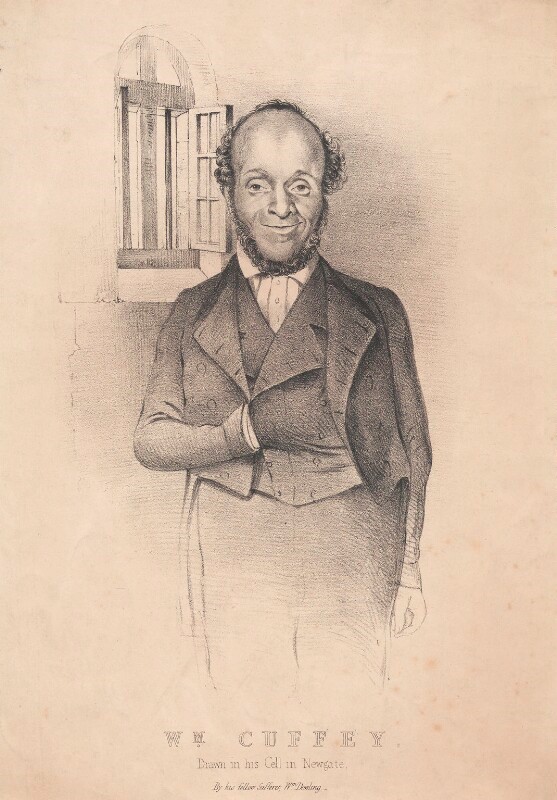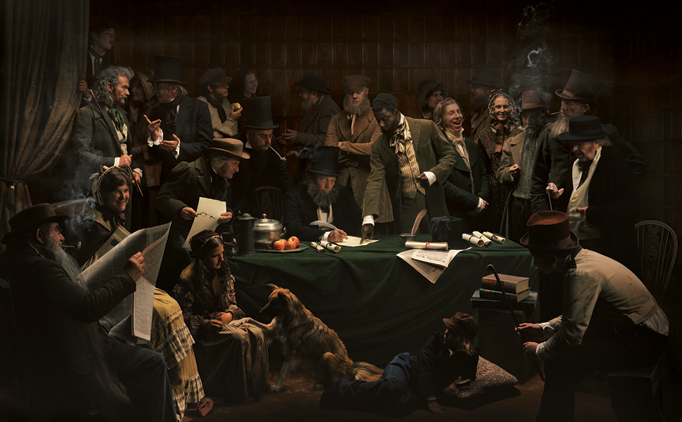To imagine a world in which men couldn’t vote due to their class or wealth seems impossible today, however this was the case in 19th century Britain. During this period poverty was rife and nothing was being done by those in power to change this. Society seemed to be structured in a way that meant this couldn’t change. For instance, the corn laws were a protectionist set of policies that were supposed to protect Britain’s economy by putting a tariff on imports, however this led to an increase in wheat prices. High wheat prices doesn’t sound that bad to us and would be a minor inconvenience at best but for the working class of the 19th century, bread was a staple of their diet and so this was a huge issue for them. The track system also exploited the working class as factory owners would pay their workers with tickets instead of money. These tickets could then only be spent in the owner’s shop, leading to a vicious cycle where the greedy owner keeps hold of his money while his workers get none!
Angered by this situation men and women from the labouring poor formed the Chartist movement. The 6 aims of Chartism was to have:
- Universal male suffrage
- Secret ballots
- Abolition of property qualifications for MPs
- Payment of MPs
- Equal-sized constituencies
- Annually elected parliaments
This movement was led by individuals who were better off than its members, but one of these leaders who has largely been forgotten by history is William Cuffay. Now you may be thinking what is so special about this man that I’ve written a blog about him? Well William Cuffay was a black man who was voted president of a predominantly white group by its members in a time when slavery still existed.

It was in these circumstances that William Cuffay became an important figure in the Chartist movement. Born in 1788 to a father freed from slavery and an English mother, he suffered from a disability that deformed his spine and shins. “After becoming a journeyman tailor in his late teens, he stayed in that trade for the rest of his life and was respected for his hard work, quiet ways, honesty, reliability, and humour.”[7] Cuffay was fired from his job for taking part in the 1834 Tailor’s strike for shorter hours. The anger caused by this dismissal and his inability to find a new job afterwards is said to have pushed him to get involved in politics. “In 1839, Cuffay helped form the Metropolitan Tailors’ Charter Association and was later voted president of the London Chartists in 1842”[8]. He was voted president as “the Chartist movement of which (Cuffay) was a dedicated part, welcomed his leadership on matters of principle far broader than ideologies of race or colour.”[9] Cuffay constantly fought against bills he viewed as being unjust, for instance “in 1844 he was on a committee opposing a bill which would have given magistrates power to imprison a worker for two months merely on his employer’s oath.”[10] After being accused of plotting an alleged revolutionary conspiracy, he “was sentenced to transportation to Tasmania where he continued his political involvement until his death in 1870.”[11]

References:
[1] William Paul Dowling, William Cuffey, Drawn in his cell in Newgate, litograph, 1848, National Portrait Gallery, https://www.npg.org.uk/collections/search/portrait/mw63331/William-Cuffay.
[2] Caroline Bressey, “The Black Presence in England and Wales after the Abolition Act, 1807-1930.,” Parliamentary History 26, no. 4 (2007): 227.
[3] Marika Sherwood, After abolition: Britain and the slave trade since 1807 (London: 2007).
[4] Bressey, “The Black Presence in England and Wales,”, 227.
[5] Ibid., 229
[6] Ibid., 237
[7] Peter Fryer, “Cuffay, William,” Oxford Dictionary of National Biography, accessed October 29, 2018, http://www.oxforddnb.com/view/10.1093/ref:odnb/9780198614128.001.0001/odnb-9780198614128-e-71636?rskey=7JiCJY&result=1http://www.oxforddnb.com/view/10.1093/ref:odnb/9780198614128.001.0001/odnb-9780198614128-e-71636.
[8] “Deportation of Chartist William Cuffay,” British Library, Accessed October 31, 2018, http://www.bl.uk/learning/timeline/item107707.html.
[9] Bressey, “The Black Presence in England and Wales,”, 226
[10] Peter Fryer, “Cuffay, William,”
[11] Phil Gregory, “The Black Radicals-William Cuffay,” The Black Presence in Britain, last modified September 19, 2009, accessed November 1, 2018, https://blackpresence.co.uk/the-black-radicals-william-cuffay/
[12] Red Saunders, William Cuffay and the London Chartists, 1842, Photo, Hidden Gallery, http://www.redsaundersphoto.eu/1842.html.
[13] “Hidden,” Impressions Gallery, accessed October 31, 2018, http://www.impressions-gallery.com/exhibitions/exhibition.php?id=43.
[14] S I Martin and Katrina Navickas, Talk: Who Was William Cuffay?/London Chartism, Kensington Chartist Project, created May 5, 2018, accessed October 31, 2018, http://www.kenningtonchartistproject.org/2018/05/25/talk-who-was-william-cuffay-london-chartism/.
Bibliography:
Bressey, Caroline. “The Black Presence in England and Wales after the Abolition Act, 1807-1930.” Parliamentary History 26, no. 4 (2007): 224-237.
“Chartist William Cuffay.” Accessed November 1, 2018. http://www.bl.uk/learning/timeline/item107707.html.
“Exhibitions :: Impressions Gallery – Bradford – Contemporary Photography.” Accessed November 1, 2018. http://www.impressions-gallery.com/exhibitions/exhibition.php?id=43.
Fryer, P. (2004, September 23). Cuffay, William (bap. 1788, d. 1870), Chartist. Oxford Dictionary of National Biography. Ed. Retrieved 1 Nov. 2018, from http://www.oxforddnb.com/view/10.1093/ref:odnb/9780198614128.001.0001/odnb-9780198614128-e-71636.
“RED Saunders.” Accessed November 1, 2018. http://www.redsaundersphoto.eu/1842.html.
Sherwood, Marika. After abolition: Britain and the slave trade since 1807. London: I. B. Tauris, 2007.
“Talk: Who Was William Cuffay?/London Chartism – Kennington Chartist Project.” Accessed November 1, 2018. http://www.kenningtonchartistproject.org/2018/05/25/talk-who-was-william-cuffay-london-chartism/.
“The Black Radicals-William Cuffay – The Black Presence in Britain.” Accessed November 1, 2018. https://blackpresence.co.uk/the-black-radicals-william-cuffay/.
“William Cuffay – National Portrait Gallery.” Accessed November 1, 2018. https://www.npg.org.uk/collections/search/portrait/mw63331/William-Cuffay.
This was certainly interesting! When thinking of Chartism, I normally see a bunch of white radical men (and now women) but reading your blog has given me a much wider insight into the struggle for rights! William Cuffay is definitely an important figure in this struggle and you have included his importance in connection to Chartism. To further your point on Victorian ideologies on race, citizenship could have been discussed further to help deepen your analysis on Cuffay. Overall, you have used many articles, podcast and images (I especially like the etching of him in prison, its very unique!) and that your blog is well structured and easy to follow.
LikeLike
Some great feedback from “Follies”. I’d like to develop their observation about furthering your analysis: given the wide research and reading you have done, I felt there was scope for further discussion about the impact Cuffy’s presence, role and representation had on chartism and what this reveals about mid-19th century notions of citizenship. I too really liked the etching of Cuffy. On one level, to have had his portrait drawn while in prison suggests he was a man of status in the movement: was his ethnicity addressed directly in other sources such as the radical or mainstream press?
Overall, I think your have a great blogging voice and encourage you to keep developing it. Perhaps avoid long introductions to your blogs (for me, there was too much general material on Chartism at the beginning of this post.)
LikeLike